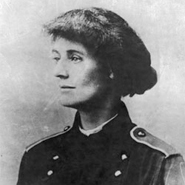Posted 12 December 2008
Social Partnership: from Lemass to Cowen
Nearly half a century before the social partnership model came into being in 1987, Sean Lemass had sought to introduce a series of measures that would eventually become features of social partnership, according to Bill Roche, Professor of Industrial Relations and Human Resources in the UCD School of Business. Delivering the 2008 Countess Markievicz Memorial Lecture, ‘Social Partnership from Lemass to Cowen’, at Trinity College Dublin recently, Prof. Roche described Lemass, long-serving Fianna Fail Minister and Taoiseach between 1959 and 1966, as a corporatist visionary and pragmatist, who had sought to transform industrial relations in Ireland on the model of the small European corporatist democracies, in particular, the Netherlands and Sweden. Lemass had sought permanently to centralise pay bargaining in Ireland and to align pay determination with government economic priorities. He had also favoured involving unions in aspects of industrial and workplace governance.
When tripartite bargaining between the state, employers and unions, first became a feature of Irish industrial relations during what Prof. Roche described as the ‘Lynch-O’Donoghue Keynesian Interlude’ of the late 1970s, the result, he said, was near economic and industrial relations anarchy. It would take the deep and prolonged economic and social crisis of the 1980s to bring about the changes in the posture of governments, employers and unions that permitted social partnership to function in the broad manner Lemass had envisaged. While Charles Haughey has been viewed either as the supreme champion of social partnership, or as a monetarist in corporatist ‘drag’, Professor Roche said that the record revealed him more as a political opportunist, who had embraced social partnership largely for reasons of realpolitik.
The social partnership paradigm had been extended in the mid 1990s, by Labour’s Dick Spring and Fine Gael’s John Bruton, when in government they invited civil society groups in the voluntary and community sector to become party to social partnership institutions and agreements. This they had done in response to the continuing political significance of persistently high unemployment and poverty, but their initiatives also reflected concerns in both political parties’ about the accountability and exclusionary proclivities of agreements reached under social partnership.
Professor Roche suggested that Bertie Ahern’s decisive role in influencing the direction of the social partnership model resided less in his role as an effective broker and mediation, or in institutional design than in his decision to shift Fianna Fail to the left after the Party’s disastrous result in the 2004 local and European elections. The consequence of what Prof. Roche described as partnership’s ‘social turn’ involved a series of redistributive budgets, the inclusion of an expansive social policy programme in the current partnership agreement, Towards 2016, and the introduction of a social investment programme in the current national development plan. Prof. Roche described Taoiseach Brian Cowen’s posture towards social partnership as considerably more instrumental than Ahern’s and more focused on the achievement of short- and medium-term economic, financial and political results. Cowen’s continued sponsorship of a process that is less central to his political identity and reputation is likely to depend on its results in these areas in times of unprecedented challenge, concluded Professor Roche.

